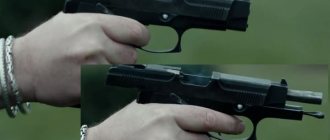The training combines educational and gaming activities, there is a lot of practice, which creates a favorable environment for the development of a wide variety of abilities and skills. But in order for participants to learn how to cope with certain tasks, the presenter needs to select suitable exercises and “build” them into the program so that they not only hook the group, but force them to draw conclusions many days after the end of the training. Only such training will be productive.
However, making an informed choice is by no means easy - the number of exercises is large, and there is no generally accepted approach to their classification. Let's try to identify the most important criteria by which they can be systematized.
What types of exercises are there?
Most training exercises combine a communicative game and its discussion, built around a specific action aimed at solving common problems. Individual exercises differ from each other:
- according to the form of organization - performed individually, in pairs, in triplets, in micro groups, simultaneously by all participants;
- according to the predominant type of activity of the participants - during the process they can talk, communicate using non-verbal means, exercise physical activity, write, work with various objects;
- the presence of age restrictions. Some exercises require a certain level of development of cognitive processes, behavioral attitudes, and social experience. Therefore, sometimes they have a lower limit for age suitability. For example, the role-playing game “Job Interview” is unlikely to interest children of primary school age. But there is usually no “ceiling” based on age. There are trainings where adults enthusiastically play name-calling, fight with pillows and sew rag dolls;
- for the tasks to be solved - exercises for getting to know each other, presenting, uniting the participants, increasing their activity and involving them in work; to develop skills and abilities, gain experience, etc.;
This is only a small part of the parameters that should be taken into account when selecting exercises. The main guideline should be the goals that they help achieve at different stages of learning. Depending on the goals, we can identify the types of exercises that are most appropriate at one or another stage of training or a separate lesson.
Warming up
They are predominantly active games with a short duration (10-15 minutes) and elements of humor, which help to liberate the participants, arouse and warm up their interest in what is happening, and as a result, “get involved” in their studies. Warm-up exercises (usually called simply warm-ups) do not train specific skills and abilities, and therefore are classified as auxiliary. Their different forms are used throughout the entire educational process:
- icebreakers - complement the dating games at the very beginning of the program; help the participants to get closer and relax, relieve wariness, and the trainer to create a creative environment for everyone present;
- warm-ups - are carried out to create or strengthen group dynamics at the beginning of the lesson, when participants need to be brought to a new topic and involved in the learning process, and in breaks between training blocks - before presenting the material, and after studying it;
- energizers are useful for a group “shake-up” at the end of an extensive theoretical block, and after a lunch break, when you need to bring the group from a state of pleasant laziness to a readiness to perceive new things.
After the warm-up, you should definitely analyze the result so that the participants understand how much this exercise reflects their situation and what they got for themselves.
Problematizing
Another name for them is challenges. These are difficult, but interesting and memorable exercises. With their help, the coach brings the participants to the realization that while they are not acting effectively, they have room to grow, and thus motivates the group to perceive new information.
It is logical to present a challenge exercise immediately at the beginning or first half of the training, before the mini-lecture. To show participants that they are doing something wrong, that they are not succeeding at all or that they are doing poorly, they are given a case where they need to do something and are provoked to make a mistake (for example, they are “timed out”). The group asks questions: “What’s the right way? How to? What can I do to make this easier?” In response to emerging interest, the trainer presents a theory, followed by an exercise on the topic. This consistency leads the group to understand that there are other methods, and they do work, and therefore need to be used. And they actively train their skills.
Thematic
Thematic or basic exercises directly train those skills that the training participants came for. They should be submitted after the mini-lecture, when there is already a certain scheme that needs to be worked out.
Exercises on the topic are quite long - in general they can take up to 70% of the total class time. To prevent students from getting bored, they are performed in mini-groups or in pairs or threes. This way, all trainees have time to practice skills and abilities, and the duration of the exercise is reduced to 30 minutes - 1.5 hours.
The training program usually includes exercises that include:
- active study of theoretical material;
- formation and development of specific skills.
In the first case, the openwork saw method works well (each participant is given a fragment of material to study and he teaches “his” information to the others). Visualization exercises are also suitable (for example, the group translates the main conclusions and theses of the theoretical part of the training into the format of a visual note).
In the second, “life options” are more acceptable:
- business and role-playing games - the coach sets the group before certain tests, and they try to overcome them and complete their task with honor;
- cases - participants work with a situation close to the real one, discuss the problem, analyze issues and make recommendations - learn to make decisions.
A mandatory component of thematic exercises is feedback within subgroups.
For introspection
Help participants understand themselves - comprehend (rethink) their actions, emotional reactions, evaluate their personal situation; draw conclusions from all this and set goals for the future. Often, they are asked to give themselves certain points or points. Performed individually or in pairs.
Sometimes such exercises are carried out in the form of meditation, for example, when practicing ways to relieve mental and physical stress in stress management training.
Finalists
During the training, the group receives a lot of concentrated information. But in order for participants to be able to use it in the workplace in the future, the trainer must help correctly organize all the learned techniques, methods and ideas.
At the final stage of the training, it is necessary to offer simple, but vivid, memorable exercises that will lead to the formation of the “bottom line” - all the useful things that the participants received during the training. You can remember everything you have learned and logically structure the knowledge you have gained using general drawings, collages, and team presentations. These techniques will also allow you to put an emotional point and form the team’s impression of the training as a time well spent.
This classification has a practical orientation and allows you to select exercises taking into account the tasks at each stage of training. But it’s worth remembering that most exercises are, to one degree or another, focused on solving several problems at the same time and combine 2 types of exercises at once. Sometimes, for example, there is both a warm-up and a challenge at once. Where exactly the emphasis will be placed depends on minor nuances of the conduct or discussion. But you can always save scarce time and “catch two birds with one stone.”
How to understand that the team needs it
Self-confidence training - how to develop
A psychologist's advice will tell you how to unite your team at work. Most often, these are four scenarios:
- The organization has just been formed and recruited people to work. It is important to use the team building method to help everyone get to know each other, as well as quickly understand their own value to the organization.
- In a situation where there has been a conflict between divisions or departments for a long time. The friendly atmosphere created during the training will allow you to learn how to interact without negativity and will help you agree that the organization can achieve high results only when all participants move in the same direction.
- Training on interaction in an established team is necessary when a company is being reorganized. The merger of departments or divisions, as well as disbandment, make adjustments to the staffing table and staffing of work units. We need to help people tune into a new way.
- Doing monotonous work for a long time turns work into a routine, growth prospects are forgotten, and interest in improving skills disappears. Team exercises allow you to take a fresh look at your responsibilities and increase motivation and productivity.
Uniting to solve a common problem
Attention! Companies in which competition between departments is a necessary condition for obtaining quality results should not conduct team-building training between rival departments. In such organizations, each department needs to be united separately. An example of such a company would be an advertising agency, where departments compete with each other and strive to create more successful slogans and videos.
Examples
And a natural question arises: where can I get interesting exercises, games or cases for training? In educational and methodological manuals, on the websites of professional trainers, and simply in the public domain on the Internet, there are a huge number of exercises collected in ready-made sets or “in bulk.” Many of them have multiple purposes, and with a little adaptation can be used to develop a wide variety of qualities, skills and competencies. We will present those that are best remembered by both participants and trainers, and we will also tell you how to adapt this or that exercise to the topic and goals of a particular training.
"Tower of Babel"
A useful and exciting exercise aimed at developing the ability to work in a group, non-verbal communication skills, creativity, and logic of thinking. It is competitive in nature and is suitable for creating an active work environment after warming up.
Content. Teams of participants build the tallest and most stable tower.
Rules. During the construction process, you cannot talk or use your voice at all. Lead time is limited.
Basic materials. Set of paper (A4); tape, scissors - for each team.
Procedure.
- The training group is united into teams of up to 7 people (preferably based on the principle “with whom you interacted least”).
- The coach gives all teams 100-150 sheets of paper (from which they will build a tower), tape, and scissors.
- Within 20 minutes, the teams plan “construction work” (discuss an action plan, create mock-ups of the paper structure).
- Before the start of “construction,” the workpieces are returned to their original state—the sheets are unrolled.
- The teams spend the next 20 minutes rebuilding their towers in deep silence.
- At the trainer's signal, work stops.
- Finished structures are measured with a tape measure and subjected to the test of time. The team whose structure can stand for 1 minute is declared the winner.
After a standing ovation in honor of the best, the following should be discussed with the teams:
- general impression of the game (were the participants comfortable, did they feel confident;
- satisfaction with the result;
- choice of construction strategy (were it possible to plan the work and distribute responsibilities at the preparatory stage);
- whether it was possible to implement it;
- what levels of planning were present and how they were manifested (in planning trainings in the organization);
- how the roles in the team were distributed;
- which of the participants showed themselves to be a leader;
- what he did to get nominated;
- mistakes made:
- what can be changed in a replay.
You should definitely pay attention to the possibility of transferring the acquired skills to planning the work of your department.
The “Tower of Babel” exercise is one of the central exercises for developing team interaction skills in team building and planning training in an organization. But when there is a shortage of time, its modification is often used: teams do not build a tower, but draw it on whatman paper. In this case, each team member receives a sheet with an individual task and is responsible for their own piece of work. For example, the first participant must ensure that the tower has 10 floors, the second - that it has 6 windows, the third - that a blue flag flutters above it, etc. Worksheets with tasks cannot be shown to each other. Everything takes no more than 5-7 minutes. This is followed by a discussion about whether the task was difficult to complete, what was most difficult, whether the interaction within the team was successful and why.
"Associations"
Familiar from childhood, this harmless and fun game is perfect for warming up during training, helps determine the level of knowledge on a topic (set by the trainer) and reveals interesting (and sometimes unexpected) views on certain issues.
Content. Participants express associations that come to mind for given words.
Basic materials. Pens and paper for participants.
Procedure.
- The trainer offers words in such an order that they evoke various non-standard associations (for example, childhood, drug addiction, addiction).
- All representatives of the training group write down 1-2 words of free associations for them one by one.
- Each participant reads out their notes.
- The reasons for the emergence of such associations are discussed.
Thus, the “Associations” exercise creates the basis for subsequent in-depth study of the material or discussion on the topic of the training. So, after the associations given in the example, it would be quite logical to dispel the myths about drug addiction among teenagers.
Sometimes the exercise follows a different scenario - associations are invented for the training participants. The coach gives one of them a soft toy and offers to give it to the second, coming up with an association for him along the way, and so on in a circle. The theme of the game in this case is often the behavior of representatives of the training team. It happens that some of them receive a fair amount of negativity addressed to them. For the coach, this is a signal about the need to understand the reasons and correct the behavior of some participants.
"Traffic light"
A simple but educational “Traffic Light” exercise takes place in the form of a discussion, helps to form a basic concept of the qualities needed by a salesperson, and therefore has long become an integral component of most sales trainings.
Content. Participants create the image of an ideal sales manager.
Basic materials. Stickers in green, yellow, red.
Procedure.
- The trainer asks the group to voice the qualities required for a salesperson. Writes down each sentence on a separate green piece of paper and pins it on the board.
- By analogy, he collects opinions about negative qualities (writes them down on yellow sticky notes) and about what a sales manager should never do (red cards).
- Invites the group to place stickers:
- green - from the most important to the least important quality;
- yellow and red - from worst to best.
The whole process will take about 20-25 minutes.
"Titanic"
A strong, non-standard, complex, ambiguous, interesting exercise - in a word, a challenge. The participants of the training are the sailors and passengers of the magnificent steamship, “sailing” towards the ominous ice iceberg. A coach who is trying to help cope with all the obstacles and give a chance to “survive” the crew and passengers of the gigantic ship that is “wrecked”.
But, alas, as in the Oscar-winning film of the same name, not everyone will be able to escape. There is confusion on the boat deck. The crew members, despite considerable powers and the presence of weapons, participate in the general stampede. At least a third of the passengers do not have enough space in the boats. The captain and his assistants, who, in fact, should lead the “rescue process” are neither seen nor heard. Under the heart-rending howl of an emergency siren and “floating” slides with footage from the film “Titanic,” passengers jump into the cold waters of the North Atlantic...
The ending of this drama may be happy. After analysis and detailed analysis of the reasons for the failure, the coach may give the team a second try. Once again finding themselves in conditions as close to extreme as possible, the participants will mobilize all their personal qualities and, demonstrating unprecedented self-organization, will solve this most difficult task. But that will be a completely different story.
“Titanic” is not just an excellent exercise in team building and personal growth training, it is a quest that requires the total involvement of the entire group. It is unlikely that his characters will be distracted by their own affairs or go out to answer phone calls from colleagues or partners. After all, this is a real test of the ability of training participants to agree among themselves.
"Compliment"
At the end of the training, it would be nice to thank each other for the interesting time spent, and exchange compliments, good wishes and praise. The exercise is designed for an unlimited number of participants.
Content. Members of the training group offer compliments and good wishes.
Decor. It is recommended to include lyrical music.
Procedure.
- Participants stand in 2 circles - outer and inner, facing each other.
- Everyone standing in the outer circle says kind words to the person standing opposite from the inner circle.
- After a minute or two, the turn to give compliments goes to the inner circle.
- The outer circle moves one person to the right - the task is repeated, but with a new partner. And so on until the first pairs match.
In psychological trainings, an advanced version of the exercise is used - participants give compliments to passers-by on the street, in this way getting rid of the fear of communicating with strangers. At the end, you should definitely discuss whether the participants were able to try out any new way of behavior, whether everything worked out for them, what was easier/more difficult - giving or receiving compliments.
"Present"
An excellent “preface” to the topic of general negotiation technology, especially telephone negotiations.
Content. Everyone loves to receive gifts, especially when they give something needed and desired. And so, one of the training participants wants to give a birthday gift to his friend. Using various techniques for identifying needs, he tries to find out what his interlocutor really wants to get. The exercise is performed in pairs.
Procedure.
- Two volunteers sit in the center of the common circle (with their backs to each other). The remaining participants take observer positions.
- The coach distributes roles - which of the two will be the giver and which will be the recipient.
- The giving player finds out the needs of the “birthday boy” - using leading phrases, open, closed and alternative questions. Ask directly, “What should I give you for your birthday?” it is forbidden.
- At the end the following is discussed:
- with the players: did the giver manage to understand the wishes of his friend;
- what techniques did he use for this;
- with observers:
- whether high-quality work has been done to identify the need;
- could it have been possible to spend less time obtaining the necessary information;
- were there any difficulties in negotiating;
- Was the recipient friendly? If not, what mistakes did the interviewing player make that made him angry?
After such a practical summary, it would be appropriate to talk about the skills of effective negotiations and repeat the exercise, but by all group members (in pairs). In conclusion, it is worth finding out whether the couples managed to avoid the mistakes made in the first dialogue. Thus, the “Gift” exercise helps improve information gathering skills and is most appropriate in negotiation training.
"Snowball"
A good way to meet people in a small group. Helps to “defuse” the situation before the start of the program.
Procedure.
- The coach and group sit in a circle.
- 2. The first participant says his name with an adjective that characterizes his strongest side and begins with the same letter as his name. For example, Olga Charming, Marina Mudraya, Sergei Skromny.
- The next person in the circle repeats the name and epithet of the previous participant, and only then calls himself.
- The third participant repeats 2 names with an adjective, and so on. The last speaker will have to name everyone present.
In a large group, the exercise should be performed not according to the “Snowball” principle, but using the “Stitch back needle” method - so that each subsequent player repeats only what was said by the previous one. In this case, the coach can ask: “Who is this?”, and the whole group names the person. Thus, each name is repeated once in chorus, which contributes to better memorization.
"Broken phone"
Its purpose is to show how information is distorted during transmission and to introduce the group to the topic of effective communication. It is recommended to video record when performing
Contents: Team members (7-10 people) take turns passing information to each other.
Basic materials. Cards with message texts.
Procedure.
- One person remains from each team, the rest go out the door.
- The trainer gives an oral message to the remaining participant.
- After listening to him, he invites one of those who came out into the audience and retells him the information.
- The new participant passes on what he remembers to the next one, and so on.
- The information received by the last participant is compared with the original text.
- The team that distorts the information the least wins.
The texts of messages should include sentences that contradict each other in perception. For example, “Marfusha was an exemplary girl, she worked at a factory.” In the understanding of adults, an exemplary girl may be a primary school student, but here she works at a factory. Inconsistencies confuse participants - they may lose sight of something, replace unusual words with more familiar ones, swap blocks of text, or tell a different story.
Who and what, and most importantly, why he interpreted it in his own way, is discussed based on the results of the video recording. You should also analyze whether the interlocutors heard / did not hear (understand / did not understand) each other; whether the listener tried to stop the speaker, ask again, or clarify. Thus, the “Broken Phone” exercise shows training participants how important it is to actively listen and sometimes ask clarifying questions.
"Oranges"
An interesting and effective challenge exercise for negotiation training. Its plot resembles a real economic detective story.
Legend.
The world is on the verge of disaster. J. Johnston, a pharmaceutical company researcher, is researching forms of defense against chemical weapons attacks. A new remedy is almost invented, you just need to add an elixir made from the peels of 3,000 oranges of a very rare variety called solar. They must be of excellent quality.
Unfortunately, this year turned out to be a lean year. But J. Johnston learned from a reliable source that a certain Ed. Fernandez, a fruit exporter from South America, has 4,000 of these oranges. If Mr. J. Johnston had obtained them, he could create a chemical antigas that would neutralize the nerve gas if it were injected into the bomb before the contents leaked. But his financial means for the purchase are limited.
But information about oranges Ed. Fernandez is also known to J. Johnston’s competitor, microbiologist P.V. Smitte. Tom recently managed to develop a substance that treats a new, serious disease caused by a little-studied virus. To complete his work, Dr. Smitta urgently needs the juice from the pulp of 3,000 oranges of the same variety. Then he will be able to produce a medicine with the right composition, cure those who are already sick, and stop the spread of the disease. But he has financial restrictions on the purchase.
Industrial espionage is highly developed in the field of pharmacology. Mr. J. Johnston and Dr. Smitte know each other's plans. In addition Fernandez announced that he would sell the oranges to the highest bidder. Before meeting with him, the competitors decide to negotiate in Dr. Smith's office on his initiative.
Procedure.
- The group is divided into teams of Mr. J. Johnston and Dr. P.V. Smith.
- For 20 minutes, teams analyze cases and plan a negotiation strategy.
- At the end of time, each team nominates one person to negotiate. The rest take observers’ places and write down points that would be useful to discuss at the end of the negotiations, and also note what interferes with or contributes to the agreement
- Negotiations take place in 3 rounds. The first one is 20 minutes. If the parties do not agree, the coach gives a time-out of 5 minutes to re-discuss the negotiation strategy. The time for the second and third rounds is reduced to 15 and 10 minutes. If necessary, you can replace the envoy.
The discussion is based on the results achieved. Often, even experienced negotiators rarely reach an agreement in the second round, and almost never in the first. Teams start with a confident, beautiful argument - they need oranges more. But the “salt” of the task is to realize that in fact different parts of oranges are needed, and it was worth starting with detailed questions to the other team! This is because partners do not have the skills to find out the interests of the other party. But after such a division of oranges, the training participants will forever remember that in order to reach an agreement, you should carefully find out what your partner needs.
"House"
This exercise teaches well-coordinated teamwork and develops leadership skills of training participants.
Content. Teams build a comfortable, spacious, complete and functional house with:
- foundation;
- walls;
- roof;
- door;
- windows;
- internal space (rooms, furniture, interior);
- a small garden in the yard.
Basic materials. Everything that is in the room (chairs, tables, hangers, etc.). You can also use yourself in the construction - someone depicts a wall, a door, pieces of furniture, flowers, etc.
Procedure. The group is united into 2 teams. In each, it is necessary to distribute responsibilities - who is building what (all participants are involved), and choose a foreman. After agreement, the teams build their “houses”. Everything about everything – 15-20 minutes.
By participating in the “Home” exercise, team members, on the one hand, think about their function in the team, realize that they are all needed in their “home” - this promotes cohesion. On the other hand, they explore their leadership style. After all, some people themselves determined their role in the house, while others were appointed. These points should be analyzed after finishing the exercise.
Why team building trainings?
Personal growth training - what is it?
Team training is necessary to achieve cohesion in the business. By realizing the commonality of goals and learning to interact, a friendly team will be able to achieve better results. After successfully conducted training, the organization receives a single hardworking organism represented by a group of employees. Properly conducted trainings successfully replace competition with cooperation within the team.
Friendly cooperation
Usually, after several lessons, beginners are no longer afraid or ashamed to ask questions to more experienced specialists, who are now more willing and more intelligible in suggesting useful information to inexperienced colleagues. Team building is more effective if the highest-ranking official does not ignore the training. By participating on an equal basis with ordinary specialists, the leader turns into a positive hero and is no longer associated with control, punishment and a source of nervous tension. Having united into a team, everyone now understands the tasks of the individual member, including the boss.
Important
Even the most fun and interesting tasks or games do not teach anything by themselves. After all, they bear so little resemblance to what happens in real life.
Therefore, each exercise (including warm-up) should be followed by a collective analysis. During it, you should definitely ask how similar this task was to what happens, for example, in real negotiations or sales. You should also touch on the topic of difficulties that the group necessarily encountered when completing tasks, and discuss achievements - group and individual.
All exercises and questions for them should in one way or another reflect the topic of the training and correspond to its objectives.
The most difficult exercises should be placed closer to the middle of the training program. At the end they are simplified so that the participants have some strength left and the thought “I wish I could get home sooner” does not creep in. For the training to be successful, you need very few exercises, but always varied, interesting and thoughtful. They may involve physical activity, or do not require external manifestations of any activity at all, such as meditative exercises, during which the work happens “inside”. Most of them are suitable for different trainings. It is only important to place the accents correctly.
The essence of team building training
Many managers consider it a pointless waste of time and money to conduct any kind of training. While their competitors, having united their subordinates, increase their profits many times over, only due to the positive atmosphere among employees.
It has been proven that training sessions:
- effectively build trusting relationships;
- indicate the importance of the personal contribution of each team member;
- reveal the importance of collective work based on cohesion;
- teach you to listen to everyone’s opinions;
- help newcomers adapt.
Interesting. Sociological studies have confirmed that the relationships between employees that have developed during interesting team building activities contribute to improving the quality of interaction, in contrast to those that develop at corporate events - such relationships, on the contrary, increase the time that employees spend on joint smoke breaks and tea breaks during working hours.
Team building tasks for teenagers
Adolescence is a difficult period in everyone's life. Unlike adults, teenagers perceive everything much more sharply; they are characterized by maximalism; hormonal changes make unsettled characters also aggressive. Classes with teenagers should be conducted by a qualified psychologist with experience in this age category.
The emphasis is usually on creative exercises that force children to think outside the box. For example, ask you to think about how you can use this or that familiar object in everyday life, excluding its direct purpose.
The best way to resolve possible conflicts and bring teenagers closer together is sports. Team building can involve active games in the fresh air. This way, enough energy will be spent, and the team spirit will be present.
Team building training for students
Training sessions for students are especially relevant in the first days of starting their studies. Many children come to study from other cities, have no friends, feel lonely, which makes the educational process especially difficult.
Team building for students
To achieve this, many universities hold student meetings in which teachers participate. It has been proven that after such events, classmates become closer together more easily, teachers are perceived positively, and educational activity increases.










